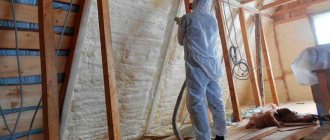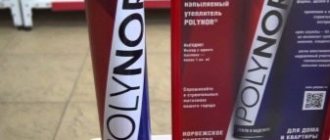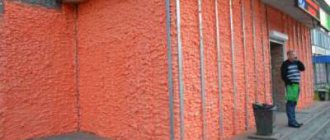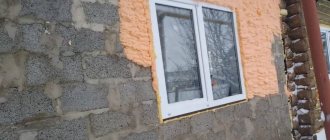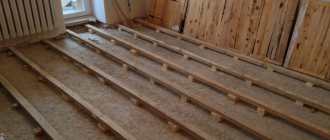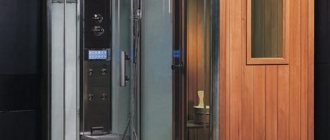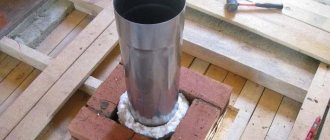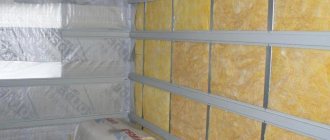Polynor company, which produces polyurethane thermal insulation, which is sold in user-friendly packaging.
Polynor Company
The packaging consists of small cylinders with a specially designed nozzle in the shape of a pistol. This is sprayed insulation that does not require any additional devices. You can carry out the procedure using this product yourself with your own hands. This is almost the only material of its kind that is accessible to all users. Thermal insulator Polinor has a wide range of applications.
Capacity
Other types of liquid thermal insulation are used very rarely, because this requires the help of professionals who use specially designed equipment to carry out the procedure.
Polinor is an exception; the description of this product makes it clear that working with it is easy. The polyurethane substance is sold in small cylinders with a capacity of almost 900 milliliters. All you have to do is put on the gun intended for installation. After this, liquid thermal insulation is sprayed and adheres to the applied surface. The material begins to bubble intensely and becomes larger in volume. All this occurs due to a reaction in which air is the main participant.
After the process, a foamy “coat” made of bubbles filled 90% with gas immediately appears on the structure. The resulting structure retains heat. The thermal conductivity index is 0.023-0.025 W/m×K. 70% are closed cells of the frozen layer of the product. In addition, not only the thermal insulation, but also the waterproofing properties of the structure being treated are improved.
Scope of application
The description of the insulation presents us with a modern, almost universal material, which has a fairly wide application as a finishing and insulating material, in particular:
- for facades for finishing;
- for foundations and attics;
- for balconies;
- for insulation of internal walls of a building, partitions in various buildings;
- to isolate communication systems;
- in vehicles with isothermal functions.
As you can see, the application is wide. And this is understandable, since the heat insulator has good performance properties, fits perfectly on any surface, is very flexible and is not subject to destruction, even if a crack appears on the surface. The material is non-toxic and perfectly absorbs sound and vibration waves.
Feasibility of use
The scope of application of sprayed thermal insulation includes:
- Facades subject to mandatory protection with siding or plaster.
- Internal walls and partitions in private houses and industrial premises.
- Pipelines and communication systems.
- Verandas, attics, attics, basements.
- Premises with a small area: loggias and balconies.
- Containers with complex shapes, vehicles (if thermal insulation of vans or walls is necessary).
- Metal surfaces: doors in warehouses and garage doors.
Sprayed polyurethane foam is not used in layered masonry and closed frame structures due to the difficulty of access, but it does an excellent job of filling cracks and open voids. The material is suitable for both internal and external insulation; it is resistant to temperature changes and moisture. Provides trouble-free adhesion to working surfaces such as wood, concrete, steel, cast iron, aluminum, plywood, brick and glass. The limitations taken into account include the low fire safety class of the insulation (G3 - normally flammable, not supporting spontaneous combustion) and zero vapor permeability.
Advantages of the method and insulation
The main advantage of sprayed thermal insulation is the ability to create a seamless energy-saving layer on your own in an extremely short period of time. The technology does not require the installation of a frame or sheathing; the insulation has an increased quality of adhesion to almost all building structures and surfaces, regardless of their angle of inclination. The sprayed material is convenient to calculate, use and transport; exactly one cylinder is used per 1 m2. If necessary, re-application of insulation is allowed, but for most objects a standard layer of 5 mm is sufficient.
Reviews confirm the consumption and performance characteristics declared by the manufacturer; it is noted that paint and plaster adhere well to the material, and there is no accumulation of condensation on the surfaces. Not everyone considers this insulation affordable, but most are inclined to believe that its price is justified. Spraying does not require auxiliary building materials or complex equipment, and there is no need for overly thorough preparation of the working base. Sprayed insulation in cylinders is consumed without a trace, the process does not depend on the complexity of the design, insulation of hard-to-reach areas is not a problem.
How to choose from all the varieties
The choice of type of insulation depends on the situation, as well as the area of application; let’s consider some common cases in which foam insulation is used:
- You can use polyurethane if you need to repair cracks or eliminate other defects on the walls. Do not expose it to direct sunlight.
- To fill large volumes, use penoizol. In this case, it is necessary to purchase a special high-pressure apparatus, since a regular cylinder will not be enough for this.
- To seal cracks and thermally insulate a small surface area, select mounting samples in cylinders. It does not ignite when interacting with fire, does not support combustion, has an environmental composition and hardness after hardening.
Remember! Polyurethane foam is categorically not suitable for insulating the entire building, since it does not have the appropriate characteristics.
To eliminate defects that have been detected externally, foam, which contains polyurethane, is applied using direct method technology, using a machine or a special cylinder. Errors within the layer that foam insulation creates require a long hose to push the material through. To fill the air gaps inside the insulation, holes are made in the wall.
Spray insulation technology
At first glance, the work methodology seems simple and understandable. However, to do the job well, you need relevant experience. It is important to set up the equipment correctly , calculate the optimal spray thickness and evenly treat the surface.
Tools and equipment
To operate, you will need a low or high pressure electro-pneumatic installation. As a rule, the kit already includes hoses and a spray gun. Consumable tanks must be ordered additionally.
When choosing equipment for insulating a frame house with polyurethane foam, you need to take into account a number of parameters:
- Possibility of heating the composition. The operating temperature for the chemical reaction of the components is +20-25°C; when lowered, the polyurethane may thicken - this will increase consumption and reduce the quality of the coupling.
- Mobility and compactness. This quality is especially important when performing high-altitude work.
- Performance. To process large areas, it is not advisable to purchase or rent a low-power unit.
In addition to equipment, you will need protective equipment : a respirator or gas mask, cotton or rubber gloves, shoes, overalls, goggles, overalls.
Consumption per 1 m2
As noted in the advantages, this insulation is quite economical. The consumption of polyurethane foam in cylinders is as follows: 1 liter is enough to cover a wall of 1 m2 with a layer 4 cm thick. For comparison, when working with mineral wool, you will need to spend more. In addition to the material, additional elements are needed for insulation, that is, sheathing, fasteners, etc., which also costs money.
Calculation of insulation thickness
It is better to entrust calculations to specialists. When calculating the thermal insulation layer, many parameters are taken into account:
- type and thickness of building material;
- type of structural element: wall, roof, ceiling, etc.;
- thermal conductivity coefficient of building material;
- climatic conditions of the region;
- qualitative characteristics of the polyurethane foam itself: type, density.
Average insulation thickness values for the central region of the Russian Federation when using polyurethane foam with closed cells:
- walls – at least 50 mm;
- roof, attic – 120-140 mm;
- basements, floors – 50-70 cm;
- foundation – 30-70 mm.
Preparatory activities
Before applying the solution, the walls of the house must be cleaned and dried - residual dirt, dust and other debris will interfere with the normal adhesion of the foam to the surface. Check the integrity of the coating; dents and cracks with a diameter of more than 5-6 mm must be removed. They must be covered with cement mortar.
The next step is to install the frame for the upcoming cladding. Make a sheathing from a wooden beam or metal profile. The frame posts must be placed strictly vertically and have a single plane.
If on the day chosen for work there is high humidity or there is rain in the forecast, then the “foam” treatment must be postponed to another time. Optimal conditions are a sunny but not hot day, the surface temperature should not exceed +30°C.
Spraying polyurethane: step-by-step instructions
The preparation of the composition depends on the form of its release. Polyurethane foam in cylinders (Polinor) is ready for use. The container must be placed in the mounting gun and shaken well.
Two-component mixtures sprayed under pressure require special preparation:
- Mix the first mixture with a mixer.
- Shake the second element (hardener) well.
- Combine the components according to the instructions, usually the proportion is 1:1. When preparing, you must avoid getting debris and moisture into the mixture.
- Fill the tank with the finished product to feed into the spray gun.
Rules for spraying polyurethane foam:
- First of all, foam is applied to hard-to-reach areas: areas near the chimney, ventilation holes, walls of complex configuration.
- Each subsequent layer of polyurethane foam is sprayed only after the previous one has completely hardened.
- It is advisable to complete all work in one day. For large processing areas, you need to enlist the help of an assistant.
- The maximum thickness of one layer is 15 mm, the minimum number of coatings is 3.
- Areas that do not require thermal insulation must first be covered with dense material.
- Polyurethane foam is applied from bottom to top, the composition is distributed between the elements of the sheathing.
Possibility of using foam fillers
Then manufacturers began to produce sprayed insulation in compact-sized cylinders, which led to a reduction in the cost of the method. To spray such a mixture of steel, complex installations and specialists in thermal insulation finishing are not needed, since the material itself is filled into small containers and the possibility of manual spraying is provided. Each cylinder is designed to cover one square meter of base (layer up to 60 mm thick). One person can process up to one hundred square meters per day.
As a result, calculations showed that working with insulation such as Polynor is much more profitable in terms of labor costs, costs for the materials themselves and surface preparation. If a professional team of workers charges up to one and a half thousand rubles for insulating one square of wall, then using Polinor insulation with the same amount of material, you need to spend only about 500 rubles. You can work independently, which eliminates the need to look for experienced workers, reduces finishing time, and saves money.
The choice of thermal insulation of this type remains the only optimal option that is available to people without special training. Foam can be used to create insulation for foundations, basements, walls inside and outside buildings made of brick, stone, concrete, and blocks. This option is also suitable for thermal insulation of non-load-bearing coatings, including floors on joists, as well as pitched roofs and attic floors.
Since Polinor is suitable for application to bases made of almost any material, it can be used as thermal insulation for plumbing fixtures and sewer pipes or fittings. In such cases, foam insulation in cylinders can be used indoors or in open areas. There is only one limitation on the use of balloon thermal insulation, which is that the material cannot be used to foam voids. It can only be applied to a dense base.
https://youtube.com/watch?v=HzNxMCfzjrE
Reviews
Those who have used this insulation system have shared their opinions. Read the reviews on forums and construction sites that we have collected:
Airat
I read reviews about Polynor. I decided to try it myself too. The base was insulated with PP. I wanted to seal the seams with Polinor. It was sprayed well, the yield of material from the cylinder was almost 100%. But it is important to pay attention to the expiration date. I blew out one balloon, then went to buy a second one in another store. I used half of it, and then some kind of sludge started to appear. I took a closer look, and it was already past the expiration date. So you need to pay attention to this. But overall, I’m happy!
Natalia
It was necessary to insulate the loggia. I decided to look through the Polynor reviews on the forums. I liked it. I bought it from Leroy, received instructions and applied it myself to 12 squares. I'm happy with the result. At the end of autumn, being on the loggia is as comfortable as being in the apartment itself. The only thing is that when spraying, foam particles fly in the air, so you need to cover everything.
Sergey
The apartment is on the first floor. I decided to insulate the floor from the basement so that the cold wouldn’t pull in from below so much. I've heard about spray-on insulation. I googled reviews about Polinor insulation and decided to try it. In about 3 hours I foamed the entire required area (about 36 sq.m.). I liked everything, I just need to ventilate it, otherwise I might collapse from the stench. It is difficult to ventilate a basement, so the speed of work was a big plus.
After using Polynor insulation, you can leave your feedback in the comments below.
Advantages and disadvantages
There are no ideal materials among insulation materials; all have not only advantages, but also disadvantages. Polyurethane foam material has a number of advantages over other heat insulators:
- Low thermal conductivity. Polyurethane foam is a good barrier to heat loss. It is perfect for internal thermal insulation, as it is enough to apply a small layer of foam.
- Waterproofing properties. The composition of the material allows it to be used as waterproofing. It perfectly protects against corrosion.
- No seams. The method of applying insulation (spraying) allows you to obtain a seamless layer. There are no joints formed in the areas where the foam adheres, through which the cold passes.
- High adhesion. The insulation adheres well to any building materials, the surface of which has been previously cleaned of debris, dust and degreased.
- Chemical neutrality. Polyurethane foam does not react chemically with other building materials and installation solutions. The insulation layer is resistant to aggressive chemicals (except petroleum products).
- High strength. After the foam polymerizes, it becomes so strong that it can withstand strong mechanical loads. It can even be used to insulate foundations that are buried in the soil. During operation, polyurethane also shows high strength.
- Fire safety. Due to the fact that the composition includes a fire retardant, this insulation has been awarded a fire safety certificate. The material not only ignites poorly, but also contributes to the self-extinguishing of fire.
- Long service life. Polyurethane does not absorb water, thanks to which it is not destroyed by adverse weather conditions and temperature changes (with the exception of ultraviolet rays). If all conditions were met during installation, it will retain its high technical characteristics for at least 50 years.
- Easy to install. Any craftsman can handle spraying insulation; there is no need to nail down brackets or install sheathing.
Disadvantages of sprayed polyurethane insulation:
- The material is characterized by low ultraviolet resistance. When irradiated, the structure of polyurethane foam disintegrates, so it is always protected from the outside with decorative materials. Cement plaster, panels, and siding are used.
- The work requires the use of special equipment. A compressor is required for spraying, and a construction mixer is required for mixing the components. It is not necessary to buy all this equipment; it can be rented.
- It is necessary to use protective equipment. When spraying polyurethane, a large amount of carbon dioxide is released, which is harmful to humans. Work should be carried out in a respirator and overalls (or other protective clothing).
- High price. Spray insulation is more expensive than other insulation materials - mineral wool or polystyrene foam.
Economic justification for the use of Polinor
If we compare the costs of laying conventional polyurethane foam and POLYNOR thermal insulation, then many factors speak in favor of the latter.
Firstly, its use can significantly save money on paying for the work of the installation team: this insulation is easily applied independently, and there is no need for knowledge of construction and technical basics.
Based on market prices in 2014, surface treatment with an area of about 100 square meters. it cost about 50 thousand rubles. These costs are similar to the costs of insulating a structure using mineral wool or expanded polystyrene. And if we compare the one-component effective heat insulator POLYNOR with a two-component mixture in the form of polyurethane foam, then the latter will cost almost one and a half times more.
The approximate cost of 1 cylinder of polyurethane sprayer POLYNOR with a volume similar to polyurethane foams is currently approximately 450 rubles. The modern Russian market is saturated with a lot of offers for the sale of Polinor, so you can always find the most acceptable price for yourself and discuss favorable delivery conditions.
Indoor insulation Polinor is packaged in an economical container, which is why purchasing more material than necessary is practically impossible, but there are no problems in re-ordering it. Please note that the standard package contains 12 cylinders with the mixture.
Receiving PPU
When mixed, polyol and isocyanate produce foam, which increases in volume and then hardens. During the manufacturing process, it is necessary to adhere to a number of requirements: maintain the required temperature and mix all components well, which makes it possible to obtain a polyurethane output that does not have seals and large air cavities.
If you change the production method, you get polyurethane foams that differ in their basic characteristics. Some are better suited for insulating openings for doors and windows, others for brick and panel buildings or pipelines. By changing the proportions of the ingredients, when mixing them, polyurethane foam with different cell sizes is obtained.
The most popular materials in this group are the following:
- Foam rubber. It is widely used in everyday life and is familiar to every person. It is used as an upholstery filler for upholstered furniture and lining material.
- Rigid polyurethane foam is used when performing installation work. It has been noticed that this insulation is negatively affected by acids and solvents.
Types of sprayed insulation
Sprayed ecowool
The technology of insulating objects with foam is naturally considered the most effective and promising. To achieve a high-quality result, you should familiarize yourself with the types of sprayed insulation and the procedure for their use. Products are divided into ready-to-use and those requiring preliminary preparation.
Sprayed thermal insulation in cylinders is freely available and is familiar to almost every home craftsman. Aerosol cans sold in hardware stores have a capacity of 500-1500 ml. Inside there is a liquid composition saturated with compressed air. Various models have their own bell or are designed to be installed in a special gun. Spraying is carried out after shaking and turning the product upside down by pressing the trigger. One 1000 ml can is enough to form 20 liters of foam or cover 1 m2 of surface with a layer 2 cm thick. This type of insulation can be used to treat small surfaces up to 10 m2. But even in this situation, 25 cans will be required to create a layer of 5 cm, which is the minimum acceptable when arranging buildings.
Industrial mixtures are made from several liquid components immediately before use. The raw materials consist of a base composition and a hardener. For this purpose, sealed containers, a high-pressure hose, a spray gun and a pneumatic installation are used. The optimal temperature for work is +20-25°C. Deviations lead to the solution foaming too weakly or too strongly. Both options lead to deviations in performance characteristics from the norm. If weather conditions do not meet the required conditions, the solution is heated or cooled.
The material is supplied from the bottom up, the thickness of each layer should be within 3-4 cm. To achieve the desired effect, you need to treat the surfaces 2-3 times after the previous layers have completely cured.
When using industrial equipment, you need to wear skin, eye and respiratory protection. The substance has the highest degree of adhesion and is extremely difficult to remove from the body, clothing and surfaces. Therefore, places that do not need insulation must be securely closed.
Comparisons of POLYNOR with other insulation materials
POLYNOR (polynor) - can be compared with many materials and insulation materials, but we will focus on the most basic ones.
We consider the economics or the true cost of insulation
When choosing any product or building material, the question always arises regarding the price/quality ratio. I would like to do everything efficiently, relatively inexpensively and not return to this issue for a long time. When insulating, it is not enough to choose the insulation you like based only on the cost and its physical and chemical properties, but you also need to understand what additional costs will arise during the work. Let's consider this using the example of traditional insulation materials: polynor, mineral wool, expanded polystyrene and polystyrene foam for an insulation area of 100 m2.
The thermal conductivity coefficient of Polynor thermal insulation is 0.023 W/(m*deg.). This is the minimum indicator among the insulation listed above! The number of closed cells is 70%. Based on this and similar parameters for other insulation materials, the thicknesses required for insulation, all other things being equal, were determined:
Mineral wool -15cm.
Accordingly, the required volume and cost of the material itself (at Leroy Merlin prices as of December 5, 2014):
Polynor - 5m3 (or 100 cylinders) X 325 rub. = 32500 rub.
Mineral wool (Ursa Terra 34PN, 50mm.) - 15m3./70rub. per m2. RUR 21,000. Expanded polystyrene (URSA XPS, 50mm) - 13m3. /224 rub. per m2. 58240 RUB. Polystyrene foam (PSB-S15U, 1x0.6x0.03) - 15 m3/36.3 RUB. per m2. 18150 rub.
Now let's move on to the second part of the question - additional costs for installing thermal insulation, the cost of work and delivery of insulation materials to the construction site.
Transportation. Polynor is produced in cylinders with a capacity of 1 liter, the covered area is 5 cm thick. is 1m2. For 100 m2 you will need 100 cylinders or 9 boxes. Transportation costs are insignificant, unlike other compared insulation materials. Their transportation requires special transport.
Cost of work. Polynor is a high-tech material, there are no requirements for the preparation of the insulated surface, it does not require lathing or vapor barrier, any person without special skills can apply PPU insulation. As a rule, construction company prices for work are 90-100% of the cost of the material itself, but this does not apply to the Polynor brand. You can apply it yourself or negotiate at your own discretion (maximum 30% of the cost of the material).
At Leroy Merlin prices as of 12/05/2014:
Vapor barrier Izospan, roll 70m2-950rub/piece.
Hydro-windproof membrane Izospan AM, roll 35m2-30 RUR/m2.
Mounting adhesive Tytan Prof Classic Fix - 139 RUR/pc.
Cost of thermal insulation materials per 100m2
hydro windproof membrane
The cost of the required materials was calculated based on the amount of materials used:
- Edged board: distance between logs 1 m. Board section: 0.02X0.08m. Cubic capacity: 100X0.02X0.08=0.16m3. Cost: 0.16m3X7000rub.=1120rub. 1a. This section of the board when insulating Polynor is necessary and sufficient to ensure the solidity of the entire insulated structure as a whole, eliminates the temperature gradient, cold bridges and moves the dew point outside the insulated plane.
- Lathing + counter-lattice: Cell format - 0.6X1.2. With this format, the amount of timber per 100m2 is 25 pieces with a length of 10m. Section of timber: 0.05X0.15m. Cubic capacity: 250X0.05X0.15=1.875m3. Cost: 1.875m3X7000rub.=13125rub.
- Vapor barrier: Cost: 100m2-1360rub.
- Hydro-windproof membrane: Cost: 105m2-3150rub.
- Assembly adhesive: 17 pcs x 139 rubles = 2363 rubles.
Mineral wool: 5-7 years (further absorbs moisture and becomes deformed)
Expanded polystyrene: PPS_JSC JV Tigi Knauf _ GOST 15588-70_13 years EPPS_NPP "Expol"_TU 2244-001-17953000-97_34 years EPPS_ZAO "Khimich. Plant"_TU 2244-002-17953000-95_16 years Eps Flomate_ "Dow Chemical"_DIN 4108_37 years Eps Roofmate_ "Dow Chemical"_DIN 4108_40 years Foam plastic: at least 30 years Polynor: 45 years
Thus, to summarize: we see that Polynor is in the middle price segment between mineral wool and expanded polystyrene, but in terms of the totality of all costs for arranging thermal insulation, durability and transportation, it is confidently in the lead.
Where is the material used?
Scope of application
New generation foam insulation is used for external and internal application. Depending on the characteristics of the objects, materials with open and closed cells are used.
Spraying is carried out on the following structures:
- Roofs of residential, commercial, administrative buildings and engineering structures. Since the main heat losses occur through the roof, a layer 10-15 cm thick is applied for high-quality insulation. When working in attic spaces, no additional finishing is required. Sprayed Polynor insulation, once cured, forms a durable outer skin. There are no odors or discharge.
- Technological containers. The use of polyurethane foam in cylinders for insulation of various tanks helps maintain a given temperature in them with minimal energy consumption. Domestic and industrial boilers are filled with polyurethane, foam is applied to the walls of swimming pools, storage facilities and other containers for storing and transporting various liquids that require stable conditions. In addition to tanks, foam is used to insulate pipes connected to them with a diameter of 20 cm or more.
- Walls. For harsh climates, Polynor insulation is an excellent solution to the problem of combating freezing of load-bearing structures. The material is in no way inferior in its characteristics to Penoplex roll insulation, surpassing it in speed of application and durability. The thickness of the layer varies between 5-10 cm depending on the type of structure and climate characteristics. Spraying is carried out inside the lattice frame, which is then covered with decorative cladding.
- Floors. A thick layer of PP is an excellent protection against cold and dampness coming from the ground or unheated basements. The material is applied to a concrete slab or subfloor in a wooden house. The lathing is pre-made, which is the basis for laying the finishing or intermediate coating. Ventilation of rooms is achieved by installing vents. The recommended application layer is 7-10 cm.
- Attics. Insulating these residential buildings with polyurethane foam allows you to create comfortable living conditions at any time of the year. To create a reliable barrier from cold and heat, you should spray at least 15 cm of foam. After this, the internal surfaces of the attic are sheathed with plasterboard, plywood or solid boards.
Depending on the treatment area, industrial equipment or one-time sprayers are selected.
Advantages and disadvantages of Polinor
Let's start with the good:
- Simple installation compared to other insulation materials, which does not require the construction of a frame and other materials (isospan film, glue, fasteners, reinforcing mesh, etc.);
- Convenience when working in places with difficult access, complex geometry of the surface to be coated, as well as in limited space;
- The technological process of applying Polinor does not require special equipment or electricity;
- Excellent adhesion to various materials (brick, wood, foam concrete, metal, glass, etc.);
- One of the best (among other traditional insulation) thermal conductivity;
- Coverage speed. To apply a thermal insulation layer of 1 m², 1-2 minutes is enough;
- Low consumption. One 1000 ml bottle is enough to cover 1 m² with a layer thickness of 5 cm, and thanks to the compact packaging you can always buy more without excess;
- Polymerization (hardening) occurs within an hour. After which, Polinor can be coated (paint, plaster, etc.) or other protection;
- Long service life, according to the manufacturer, from 35 to 50 years;
- Environmental Safety. During operation it does not emit harmful substances;
- In addition to thermal insulation, it provides sound insulation and does not condense;
- We do not like rodents, insects, fungal mold and other biological activity.
There are so many useful and convenient things. Now I'll tell you about the disadvantages:
- Low resistance to direct solar radiation, just like polyurethane foam is “afraid” of ultraviolet radiation;
- Fragility with regular contact with water;
- Limited temperature conditions during installation. The temperature of the cylinder at the time of the process should be in the range from + 18° to + 35°C. In this case, application is possible up to t = - 20°C.
- Toxicity at work. Therefore, the use of personal protective equipment: masks, respirators, skin covering is mandatory;
- Difficulty in applying a uniform layer thickness. The result is the risk of obtaining non-uniform thermal conductivity of the treated coating. But with experience, the quality of spray uniformity increases;
- Limitations on layer thickness of 6 cm (this is the manufacturer’s recommendation);
- Polynor is not hygroscopic, therefore it creates a sealing of the surface, which eliminates its “breathing”, and therefore the ability to absorb vapor;
- The insulation is sold in cylinders, for which you need to separately purchase a construction gun with a special nozzle. If the gun or attachment is lost (broken), you will have to buy a new one. Without it, it is impossible to carry out a high-quality process (as the manufacturer claims).
We insulate OSB wall boards.
At the end of this question, it is necessary to mention an important point - the flammability of Polinor. It belongs to the so-called self-extinguishing materials, but this is only in the absence of direct and constant exposure to fire
Its flammability class is G3 (i.e., medium flammable).
Well, one more point stated by the manufacturer: POLYNOR analogues are not produced in the world and in Russia. Whether this is good news or not, depends on how you look at it... But it’s up to you to judge how balanced the pros and cons of the material are.
Contractor Information Portal
How much does POLYNOR cost?
From us you can buy POLYNOR at a discount depending on volume. Call!
How many cylinders are in a box?
The box contains 12 cylinders with POLYNOR insulation.
Dimensions, weight, volume of the Polinor box?
Dimensions of the box with thermal insulation POLINOR 0.27x0.21x0.34 m (WxDxH)
Volume 0.02 m3, weight 12 kg.
How much does delivery cost?
You can calculate the cost of delivery on the website of the transport company PEC at the link https://pecom.ru
Delivery to TK PEK is free!
What is the consumption of a POLYNOR cylinder?
One cylinder is enough for 1 to 1.2 m2 of insulated surface with a thickness of 5 cm.
Thermal insulation efficiency?
Thanks to the monolithic layer of POLINOR insulation, the possibility of the appearance of cold bridges is eliminated and maximum insulation efficiency is achieved.
POLYNOR has the lowest thermal insulation coefficient among polyurethane foam (0.025 W/m* 0C)!
Insulation 50 mm POLYNOR = 150 mm mineral wool = 80 mm polystyrene foam.
Is this polyurethane foam?
Polyurethane foam is not capable of producing the “torch” necessary for high-quality spraying, which is the main feature of the POLYNOR NPU.
Polynor, like polyurethane foam, is polyurethane foam. However, Polynor's properties and characteristics differ from polyurethane foam:
Low water absorption - according to this indicator, POLYNOR is among the leaders (0.01-0.03 per day from the initial volume for POLYNOR; 0.2 for mineral wool; 0.02 for expanded polystyrene; 0.14 for penoizol). Does not support combustion. The lowest thermal insulation coefficient among polyurethane foam (0.025 W/m* 0С) Predominantly closed-cell structure (70% of the cells are closed)
Liquid insulation brand POLYNOR
The use of most heat and sound insulation materials in repair and construction work involves a rather complex installation technology that requires special tools and certain skills. An alternative solution to this issue was the fundamentally new liquid insulation POLYNOR, which stands out from the general background due to its ease of use along with high performance and technical characteristics.
POLINOR insulation has a polyurethane foam base, which is a foamed polymer mass with a percentage of gases to solid particles in a ratio of 90:10. When interacting with air, this substance “swells” and hardens (like polyurethane foam), creating a dense, monolithic fine-mesh coating without the slightest cracks or gaps.
Due to its structure, POLYNOR material easily penetrates into the most inaccessible places and is perfectly fixed on the surface of metal, wood, concrete or brick. The insulation is packaged in aerosol cans with a capacity of 800–1000 mm in the form of a plastic mass of cream or pink color, which can be sprayed using a special mounting gun.
Liquid insulation POLINOR has significant differences from its analogues. First of all, this concerns its structure, namely, the percentage of closed and open cells (pores) in the frozen mass. This value is an important indicator that affects the degree of thermal conductivity, moisture absorption and water permeability of the material. Other spray-on thermal insulation products can provide a coating with 30-40% closed cells, while POLINOR creates more than 70% of these pores.
This material has the lowest thermal conductivity among insulators presented on the Russian market. For example, this indicator for mineral wool is 0.045, polystyrene foam is 0.033, and for POLINOR it is 0.023 W/m2* °C. It must be remembered that a substance with a lower degree of thermal conductivity has the best characteristics. This property of the insulation allows you to significantly reduce its consumption - one bottle of the mixture is designed to process 1.2–2.0 m2.
Sprayed insulation POLINOR can be used at ambient temperatures from -25 to +125 °C. When heated to 450 °C, it is deformed along the length by 85% and damaged by weight by 50%. The period of its independent combustion is about 5 minutes. Other technical characteristics of the insulation are presented in table form:
| POLYNOR parameters | Values |
| consistency/color | homogeneous, viscous/white, pink |
| cell structure (pores) | fine-grained |
| density of insulating layer (kg/m3) | 18–28 |
| optimal layer thickness (mm) | 25–60 |
| volume fraction of closed cells (%) | not less than 70 |
| moisture absorption (% by volume) | no more than 2 |
| thermal conductivity (W/m2* °C) | 0,023–0,025 |
| polymerization speed (min) | 40–45 at +20 °C |
| complete drying time (h) | 34–36 |
| flammability group | G 3 |
| effective service life | up to 50 years |
The environmental friendliness of the material allows it to be used in thermal insulation of residential premises. POLINOR has a high degree of adhesion to a wide variety of surfaces, is resistant to aggressive environments, moisture and chemicals, and also has a low level of actual heat loss.
New generation material POLINOR - polyurethane insulation with excellent performance characteristics - is used in construction for heat and sound insulation of various objects. It is used in cases where it is necessary to quickly and inexpensively protect a façade, loggia, veranda, attic, attic or basement from the cold.
This sprayed insulator is ideal for insulating an apartment, country house, cottage or industrial premises. It can be used to treat utilities, systems and pipelines. By using POLINOR in the design of refrigerated vans or isothermal cars, the insulating properties of these vehicles can be significantly increased.
Basic properties of the material
Sprayed insulation Polinor. Its characteristics demonstrate excellent technical properties that exceed the properties of other materials:
| Parameter | Meaning |
| Density | 18-28 kg/m3 |
| Water absorption by volume | 0.02 |
| Coefficient of thermal conductivity | 0.023-0.025 W/mK |
| Temperature | From -25 to +120 °C |
| Coating thickness | 25-60 mm |
| Probable service life | 35 years |
| Polymerization rate at t=20 °C | 40 min |
| Complete drying time | Up to 3 days |
| Failure due to compression, shear. | Missing up to 50% |
| Flammability group | G3 |
Application Features
Before using POLINOR to insulate a particular area, it is necessary to prepare the surface by carefully removing dirt, dust, grease and oil stains from it. Before starting work, the PU foam cylinder should be left for some time in a room with an air temperature of +18 °C. This is done so that the substance does not harden - then the applied layer will be more uniform.
To prepare POLINOR for use, install a special nozzle on the cylinder, which is included in the kit. Having put it on until it clicks, you need to remove the cover from the cross and attach the mounting gun, which is purchased separately. All actions must be performed while holding the packaging in a vertical position. At the beginning of work and as it progresses, the container should be shaken well.
The insulation is applied to the surface by spraying by pressing the “trigger” of the mounting gun. The maximum layer thickness should be no more than 500 mm. At the end of the work, the gun must be disconnected from the cylinder and its parts must be cleaned with a liquid solvent. Each package includes instructions for using the material with clear recommendations and explanations.
Customer Reviews
Three years ago, when the composition first appeared on the domestic market, many experts treated it with some caution. Today, most buyers leave only positive reviews about this product:. “I was considering liquid insulation in cylinders as an option for insulating floors in the basement of my country house
I chose POLINOR and it turned out to be absolutely right. I decided to do the whole process myself and, to be honest, I didn’t even expect such a result. Imagine as much as 120 m2 of high-quality insulation in just four hours of work! I would especially note the good adhesion of the material to the concrete base"
“I was considering liquid insulation in cylinders as an option for insulating the floors in the basement of my country house. I chose POLINOR and it turned out to be absolutely right. I decided to do the whole process myself and, to be honest, I didn’t even expect such a result. Imagine as much as 120 m2 of high-quality insulation in just four hours of work! I would especially note the good adhesion of the material to the concrete base.”
Evgeniy, Samara.
“I insulated a standard 3.5 square meter balcony in just an hour, and spent three times less money than on the mineral wool that my neighbor suggested installing. POLINOR has only one drawback - certain conditions are required for its application. The air temperature should be at least +15 °C; if it’s colder outside, it foams worse and consumption increases.”
Fedor Fedorovich, Ufa.
“We planned to order a team of specialists with equipment, but we thought about it, did the math and decided to do everything ourselves. Believe it or not, you saved twice as much! We insulated the garage (the walls between it and the house), spent a long time choosing materials and, after reading reviews on the Internet, decided to buy sprayed POLYNOR. It turned out very well, and most importantly – quickly and inexpensively.”
Ekaterina, Moscow region.
Pros and cons of insulation
Concluding the review, we need to once again list all the advantages of the innovative insulation of the POLINOR brand:
1. Efficiency. The energy saving indicators of the material are higher than those of its analogues.
2. Ease of use. POLINOR does not require installation of a frame structure.
3. Cost-effective. The insulation is packaged in small cylinders - this allows you to purchase the exact amount needed for work.
4. Environmentally safe to use and harmless during operation.
5. High performance. The insulation can be sprayed over an area of 1 m2 in just 15 seconds.
6. Durability. The service life of the material is at least 50 years.
7. Affordable price. POLINOR in cylinders costs 2.5 times cheaper than visiting a team of craftsmen with special equipment for standard insulation.
Installation
When using Polinor there is no need to purchase expensive spray equipment. To get started, just put a specialized gun on the cylinder and press the trigger. The mixture has a high spray speed, it can be easily applied to flat surfaces such as walls and floors, and also squeezed onto the ceiling without fear of leakage or falling off.
It is important to note that after the first pull on the trigger, strong pressure is created, as a result of which too much of the spray mixture may come out. To avoid this, it is recommended to make the first descent within an interval of no longer than 1-2 seconds.
A good performance quality of Polinor is that the user has the ability to independently regulate the thickness of the applied mixture. With uniform spraying, you can achieve a layer of any size without seams.
There is no need for special surface treatment before applying polyurethane spray; it is enough to simply clean it of visible large contaminants.
Nuances
It is important to apply the mixture after shaking the container. Moreover, it must be at room temperature! It is best to spray the insulator onto a damp surface, which guarantees excellent adhesion. Applying 1 layer is usually not enough, so after it has dried, you should spray a second one so that the total thickness is around 40-50 mm. During operation, the cylinder should be shaken regularly, and at the end of the action, remove the gun and wash it, which makes it possible to use it on new containers with a heat insulator.
If, after the protective layer has dried, any damage or chips are found, they can be easily eliminated by applying a new layer of polyurethane insulator on top of the defective area. To increase fire-fighting properties, the material is treated with a special composition that will provide the surface with flammability class G1.
After applying the material and completely drying, it can be painted or plastered, as well as covered with plasterboard.
POLYNOR is an excellent innovative high-quality material, through the use of which it is possible to achieve effective insulation of structures and reduce heating costs.
How to use Polinor insulation
This insulating material is produced in the form of an aerosol in cylinders with a volume of 1 liter. The contents of the cylinder are a pink polymer substance. When sprayed with a special gun, polyurethane foam forms a dense foam , filling the space without a single gap. The liquid form helps the substance penetrate into cracks and cracks, as well as any hard-to-reach places. In addition, it is able to reliably adhere to any surface: metal, brick, wood (including plywood and chipboard), paint, concrete, etc.
Temperature range Polynor
Users may be interested in the maximum temperature limits that Polynor can withstand. They are different for storage in cylinders, application and direct service of the material at the site of its installation:
- Application from -5°С to +40°С;
- Storage in cylinders down to -50°C, taking into account that such a temperature reduces the yield during subsequent use;
- Operating mode from -60°С to +80°С;
- The maximum possible temperature of use is +121°C. In this case, the service life will be no more than a year.
